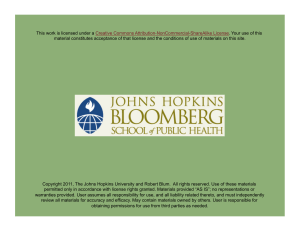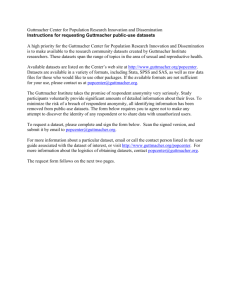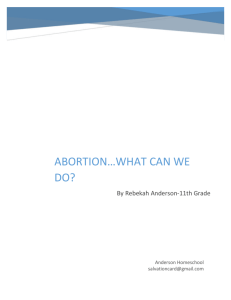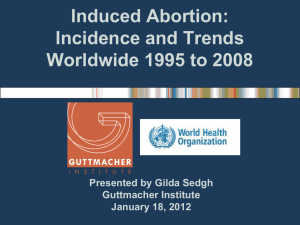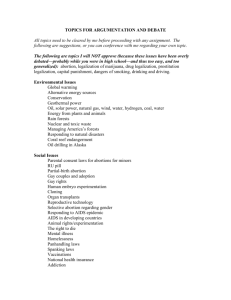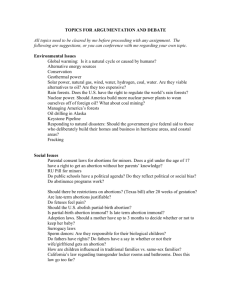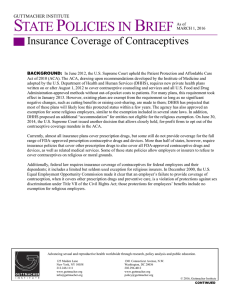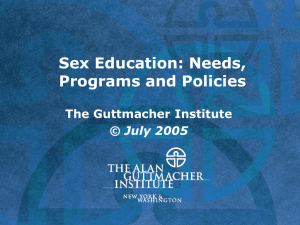Bans on 'Partial-Birth' Abortion
advertisement
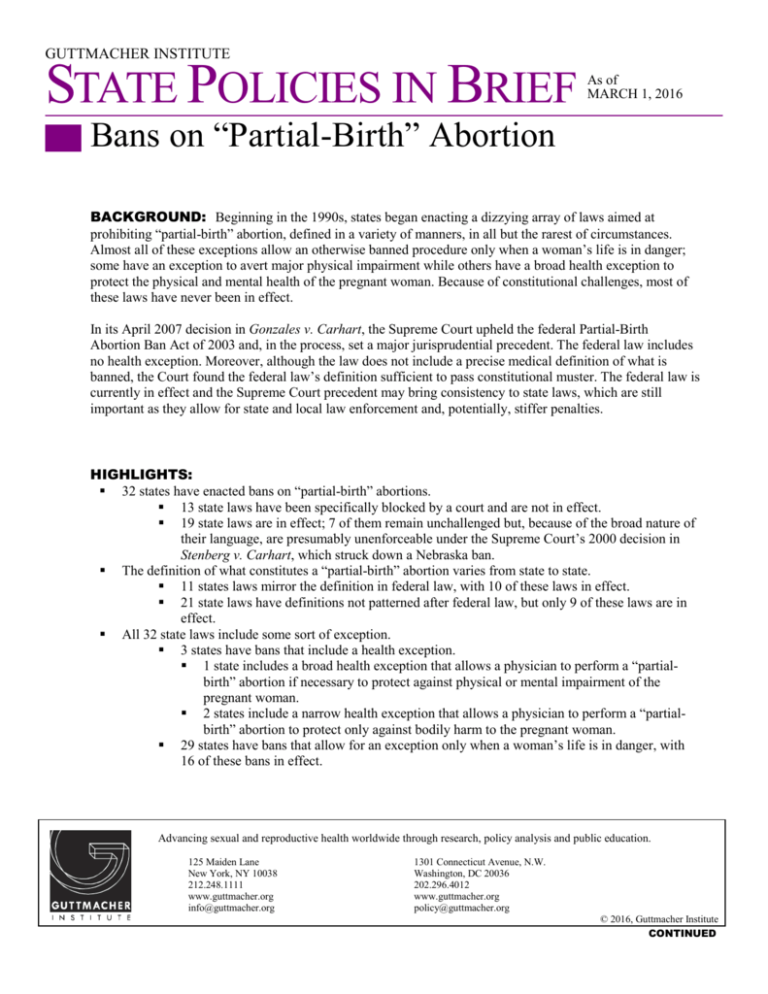
GUTTMACHER INSTITUTE STATE POLICIES IN BRIEF As of MARCH 1, 2016 Bans on “Partial-Birth” Abortion BACKGROUND: Beginning in the 1990s, states began enacting a dizzying array of laws aimed at prohibiting “partial-birth” abortion, defined in a variety of manners, in all but the rarest of circumstances. Almost all of these exceptions allow an otherwise banned procedure only when a woman’s life is in danger; some have an exception to avert major physical impairment while others have a broad health exception to protect the physical and mental health of the pregnant woman. Because of constitutional challenges, most of these laws have never been in effect. In its April 2007 decision in Gonzales v. Carhart, the Supreme Court upheld the federal Partial-Birth Abortion Ban Act of 2003 and, in the process, set a major jurisprudential precedent. The federal law includes no health exception. Moreover, although the law does not include a precise medical definition of what is banned, the Court found the federal law’s definition sufficient to pass constitutional muster. The federal law is currently in effect and the Supreme Court precedent may bring consistency to state laws, which are still important as they allow for state and local law enforcement and, potentially, stiffer penalties. HIGHLIGHTS: 32 states have enacted bans on “partial-birth” abortions. 13 state laws have been specifically blocked by a court and are not in effect. 19 state laws are in effect; 7 of them remain unchallenged but, because of the broad nature of their language, are presumably unenforceable under the Supreme Court’s 2000 decision in Stenberg v. Carhart, which struck down a Nebraska ban. The definition of what constitutes a “partial-birth” abortion varies from state to state. 11 states laws mirror the definition in federal law, with 10 of these laws in effect. 21 state laws have definitions not patterned after federal law, but only 9 of these laws are in effect. All 32 state laws include some sort of exception. 3 states have bans that include a health exception. 1 state includes a broad health exception that allows a physician to perform a “partialbirth” abortion if necessary to protect against physical or mental impairment of the pregnant woman. 2 states include a narrow health exception that allows a physician to perform a “partialbirth” abortion to protect only against bodily harm to the pregnant woman. 29 states have bans that allow for an exception only when a woman’s life is in danger, with 16 of these bans in effect. Advancing sexual and reproductive health worldwide through research, policy analysis and public education. 125 Maiden Lane New York, NY 10038 212.248.1111 www.guttmacher.org info@guttmacher.org 1301 Connecticut Avenue, N.W. Washington, DC 20036 202.296.4012 www.guttmacher.org policy@guttmacher.org © 2016, Guttmacher Institute CONTINUED BANS ON “PARTIAL-BIRTH” ABORTION STATE STATUS OF DEFINITION LAW Mirrors Federal Definition State Definition Alabama Alaska Arizona X X Arkansas X X Florida Georgia X* X* Idaho Illinois Indiana † † Iowa Kansas X X Kentucky Louisiana X X Michigan X X Mississippi † † Missouri § § Montana †* †* Nebraska New Hampshire X X New Jersey New Mexico X* X* North Dakota X X Ohio X X Oklahoma † † Rhode Island South Carolina † † South Dakota † † Tennessee † † Utah X X Virginia X X West Virginia Wisconsin TOTAL 19 10 9 Enforcement permanently enjoined by court order; policy not in effect. § This law is temporarily enjoined pending a final decision in the courts. X Policy is currently in effect. Broad Health EXCEPTIONS Narrow Health Life Only X X X* † X X X † § †* X X* X X 1 2 † † † † X X 16 * Law applies post-viability only. † This policy is presumably unenforceable under the terms set out in Stenberg v. Carhart; however, it has not been challenged in court. GUTTMACHER INSTITUTE MARCH 1, 2016 FOR MORE INFORMATION: For information on state legislative and policy activity, click on Guttmacher’s Monthly State Update, for statelevel policy information see Guttmacher’s State Policies in Brief series, and for information and data on reproductive health issues, go to Guttmacher’s State Center. To see state-specific reproductive health information go to Guttmacher’s Data Center, and for abortion specific information click on State Facts About Abortion. To keep up with new state relevant data and analysis sign up for the State News Quarterly Listserv. Jones RK and Finer LB, Who has second-trimester abortions in the United States?, Contraception, 2011, 85(6): 544-551. Dailard C, Courts strike partial birth abortion ban, decisions presage future debates, Guttmacher Report on Public Policy, 2004, 7(4):1–3 & 14. The Alan Guttmacher Institute, High court strikes down ‘partial-birth’ ban, upholds protections for clinic clients, Guttmacher Report on Public Policy, 2000, 3(4):12. Boonstra H, The antiabortion campaign to personify the fetus: looking back to the future, Guttmacher Report on Public Policy, 1999, 2(6):3–5. Cohen SA and Saul R, The campaign against ‘partialbirth’ abortion: status and fallout, Guttmacher Report on Public Policy, 1998, 1(6):6–10. Gold RB and Nash E, Abortion counseling and fundamental principles of informed consent, Guttmacher Policy Review, 2007, 10(4):6–13. GUTTMACHER INSTITUTE MARCH 1, 2016
